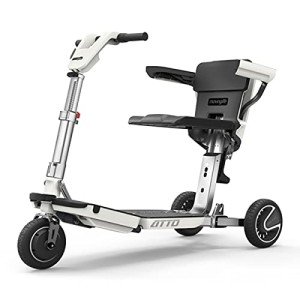Portable Mobility Scooters: Enhancing Freedom and Independence
As the world progressively moves towards inclusivity and availability, portable mobility scooters have become an advanced solution for individuals with mobility obstacles. These compact, easy-to-transport scooters are developed to empower users with the ability to navigate their environments with confidence and ease. In this post, we will check out the attributes, advantages, and considerations when selecting a portable mobility scooter, supported by tables and FAQs to offer a detailed overview.
Understanding Portable Mobility Scooters
Portable mobility scooters are lightweight, battery-operated lorries that provide an alternative mode of transport for those with limited mobility. Compiled utilizing durable products, they are particularly engineered to be lightweight and compact to help with easy transportation in vehicles or on public transportation.
Key Features of Portable Mobility Scooters
| Function | Description |
|---|---|
| Weight Capacity | Many scooters can support users weighing between 250 to 500 pounds |
| Battery Life | Common series of 10 to 30 miles per charge |
| Speed | Typically runs in between 4 to 8 mph |
| Turning Radius | Varies from 32 to 60 inches, making them suitable for indoor usage |
| Foldability | Numerous models can be quickly folded for transport |
| Wheels | Normally geared up with either strong or pneumatic tires |
Portable mobility scooters are ideal for both indoor and outdoor use, providing stability and ease of motion.
Benefits of Portable Mobility Scooters
- Improved Freedom: Users can engage in activities that were previously challenging, such as shopping and interacting socially, thereby enhancing overall quality of life.
- Transport Convenience: Many portable scooters can be quickly dismantled or folded, enabling users to transport them in vehicles, vans, or public transport.
- Cost-efficient: Compared to powered wheelchairs, portable scooters are often less costly, offering an economical solution.
- User-Friendly Design: Most designs include instinctive controls, making them simple to operate for individuals of any ages.
- Range of Options: With numerous brand names and designs on the marketplace, potential users can select scooters that fit their particular requirements-- ranging from off-road use to compact indoor alternatives.
Essential Considerations When Choosing a Portable Mobility Scooter
- Weight and Portability: Assess the weight of the scooter itself and its components. Lighter models are normally easier to carry.
- Battery Life and Range: Consider how far you need to travel on a single charge. If you expect long journeys, a scooter with a prolonged battery life is critical.
- Size and Dimensions: Measure where you'll keep the scooter and guarantee it fits easily in your automobile or home.
- Comfort Features: Look for scooters with adjustable seats, armrests, and other ergonomic features for included comfort throughout usage.
- Terrain Compatibility: If you prepare to utilize the scooter outdoors, guarantee it can handle various terrains (e.g., gravel, grass) with ease.
| Factor to consider | Significance |
|---|---|
| Weight & & Portability | Affects ease of transportation and storage. |
| Battery Life | Identifies range and liberty to explore. |
| Size | Crucial for storage and maneuverability. |
| Convenience Features | Boosts the general user experience. |
| Terrain Compatibility | Ensures versatility in outside conditions. |
Regularly Asked Questions (FAQs)
1. How quickly can a portable mobility scooter go?
The majority of portable mobility scooters can reach speeds between 4 to 8 miles per hour. However, the speed might vary based on the model and the weight of the user.
2. Do portable mobility scooters need a license or registration?
In many nations, portable mobility scooters do not require a driver's license or registration, but it's essential to examine regional guidelines.
3. What is the common price variety of portable mobility scooters?
Costs usually vary from ₤ 600 to ₤ 3,000 or more, depending upon features, brand, and specs.
4. Can portable mobility scooters be used on mass transit?
Yes, numerous public transport systems accommodate portable mobility scooters, however it's a good idea to sign in advance relating to policy information and space limitations.
5. What are the upkeep requirements?
Regular maintenance includes battery checks, tire evaluations, and keeping the scooter clean. It's advised to consult the user manual for specific upkeep guidelines for your design.
Portable mobility scooters have become a lifeline for lots of people seeking self-reliance and mobility in their everyday lives. Their benefit, ease of use, and range of readily available designs enable users to select the perfect scooter to fit their way of life.
For anyone thinking about investing in a portable mobility scooter, it's crucial to examine personal requirements carefully and explore numerous options on the market. With the ideal option, these scooters can substantially boost mobility and help with a more active lifestyle, eventually leading to improved health and health and wellbeing.
By understanding the features and aspects associated with selecting a portable mobility scooter, users can take the very first step towards claiming their flexibility again. Whether for running travel mobility scooters , delighting in the outdoors, or merely moving around the home, portable mobility scooters redefine what it suggests to stay active and taken part in life.

